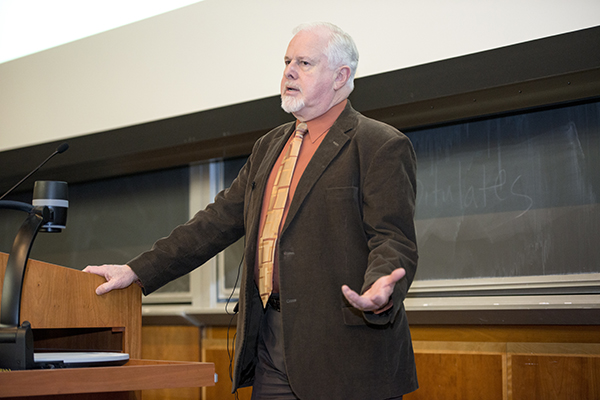

Last week, New Paltz hosted a lecture by Business Development Manager, John Dobstetter from Stratasys, Ltd., a manufacturer of 3-D printing equipment and materials that create physical objects directly from digital data, according to its website.
Dobstetter’s lecture detailed the nuts and bolts of 3-D printing. He began by saying that this is a “very exciting time for the industry.”
“More and more people are becoming aware of 3-D printing,” Dobstetter said. “The technology is growing specifically in the manufacturing business.”
New Paltz has been taking advantage of 3-D printing for the past four years, but is interested in expanding its involvement to support economic growth in the Hudson Valley, Dean of Science and Engineering, Dan Freedman, said.
Now at the beginning stages of its development, 3-D printing is “apt to draw a parallel” to the growth process computers have undergone within the last 30 years, according to Freedman.
“Computers were very large, expensive, refrigerator-sized objects only to be found in academic institution and government installations,” Freedman said. “The things you can do with [3-D printing] are already pretty impressive and their uses are only going to grow as we learn how to print new materials and the technology continues to get less expensive and easier to use.”
Programs within the 3-D printing realm at New Paltz have been initiated as a partnership between the School of Science and Engineering and the School of Fine and Performing Arts. New Paltz’s expansion on the program includes installing software onto computers throughout the campus that provides printing facilities all students can use.
According to Interim Dean of the Fine and Performing Arts Department, Paul Kassel, 3-D printing makes it possible, faster and less expensive to virtually design, create and prototype complex pieces.
“As far as we know, our program combining the Schools of Fine and Performing Arts and Science and Engineering is unique in the nation,” Kassel said. “It involves design and programming and emphasizes not the technology so much as the principles of design and engineering that can exploit that technology.”
Freedman said New Paltz is looking to expand the use of 3-D printing by starting a program next fall that further incorporates mechanical engineering. Likewise, he said the newly opened MakerBot innovation center will provide a campuswide resource for 3D printing.
“New Paltz is at the forefront of introducing 3-D printing to an institution of higher education,” Freedman said. “It’s something I hope they take advantage of because it’s an opportunity that hasn’t been given to many other students.”
